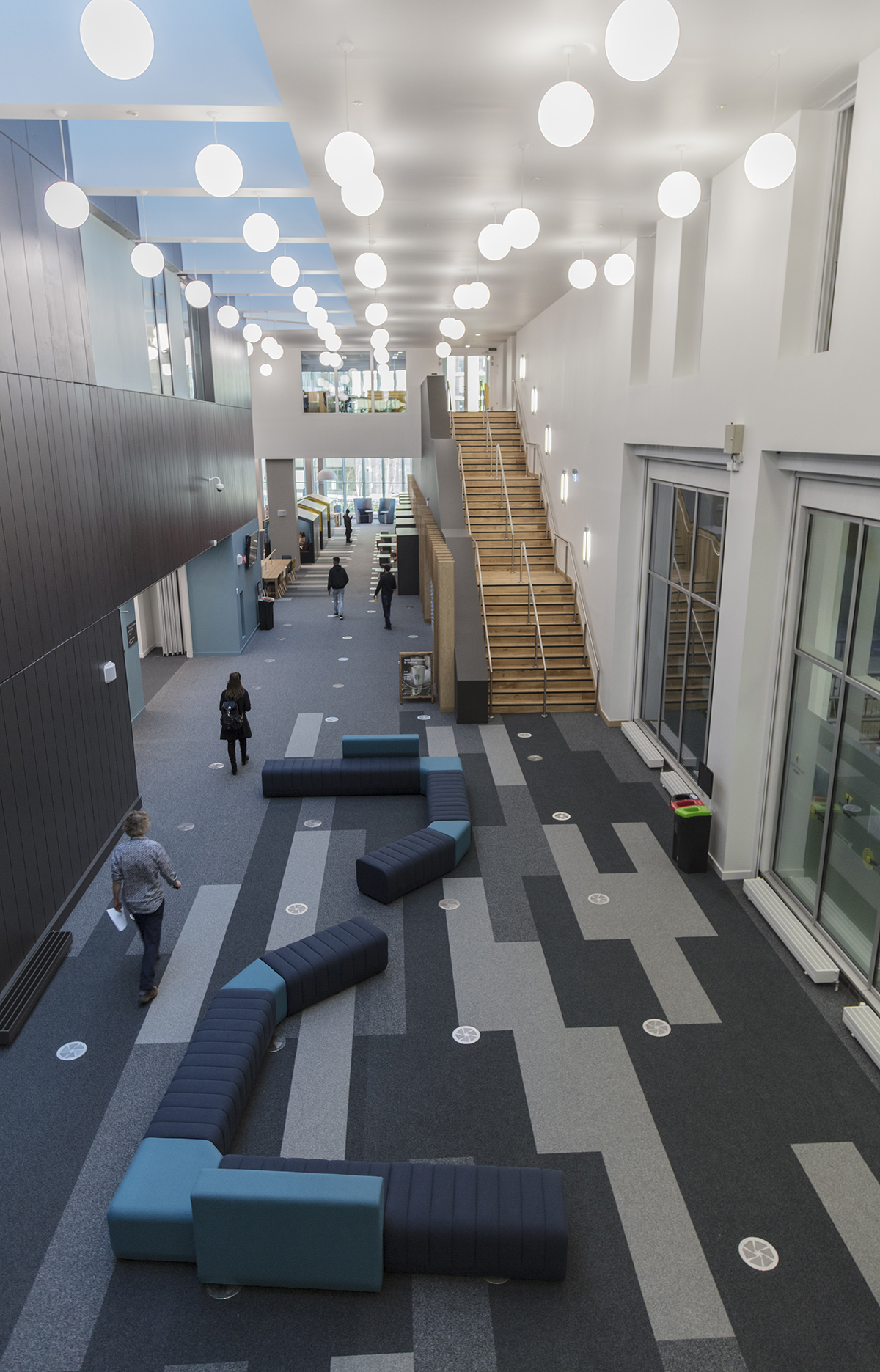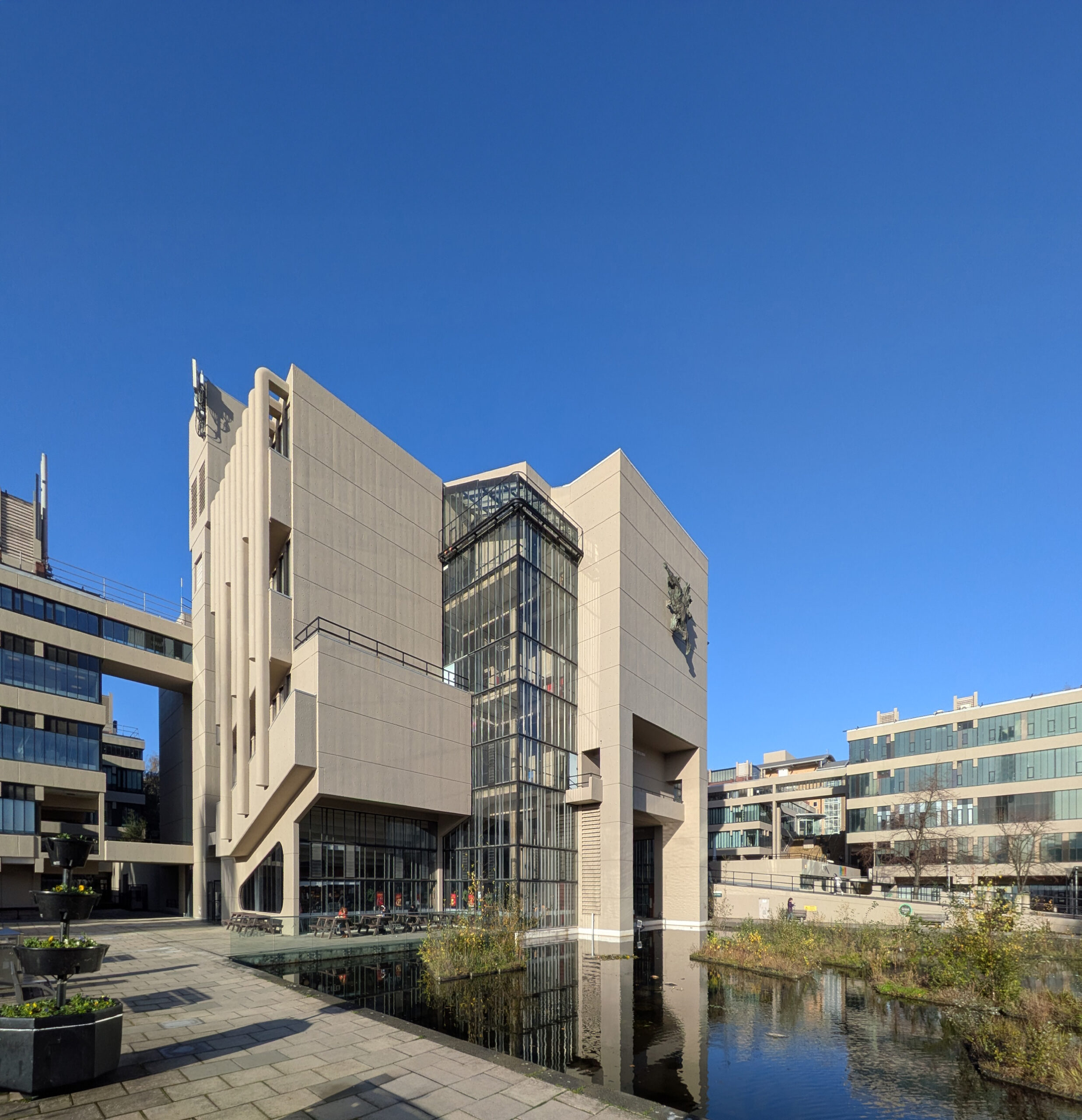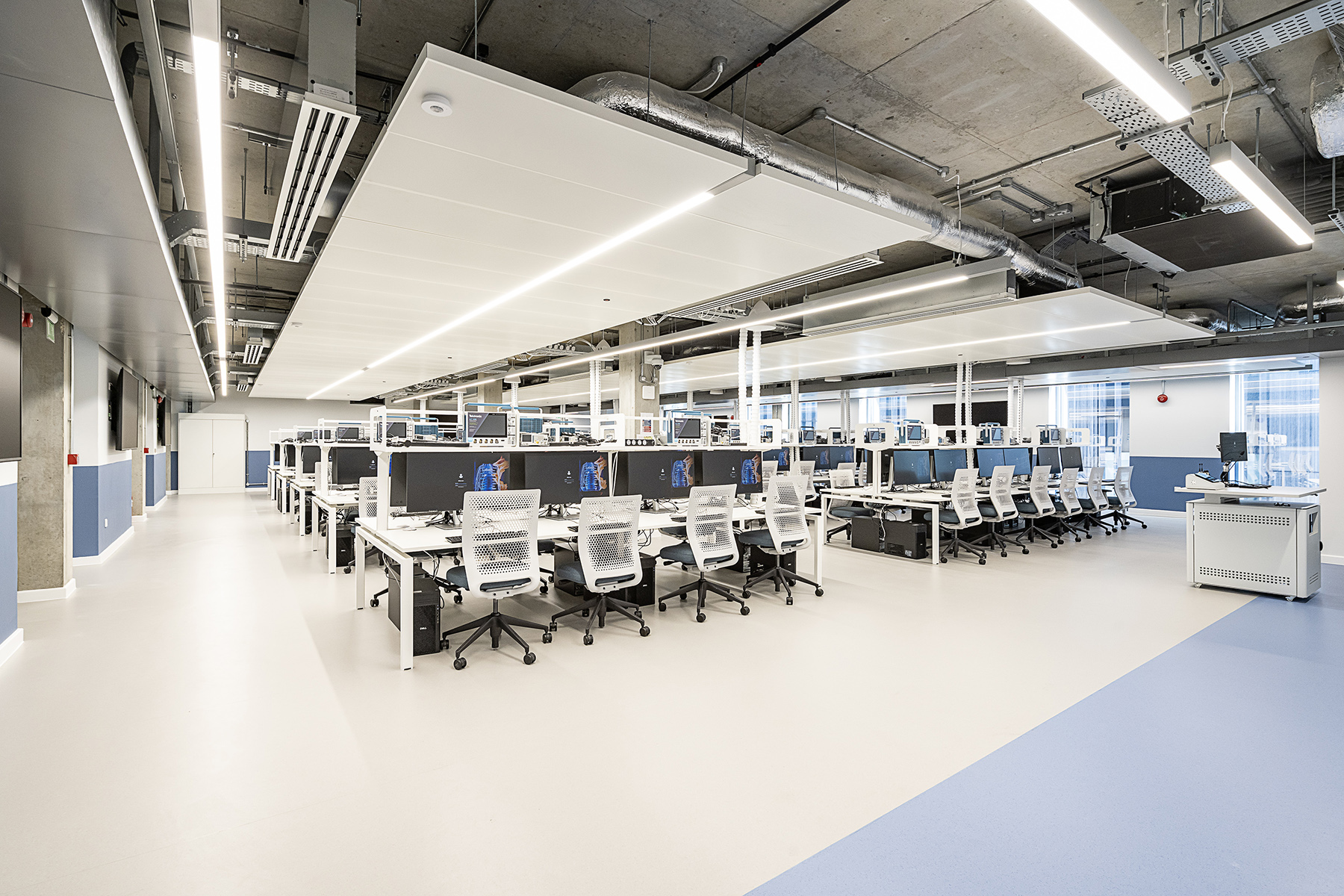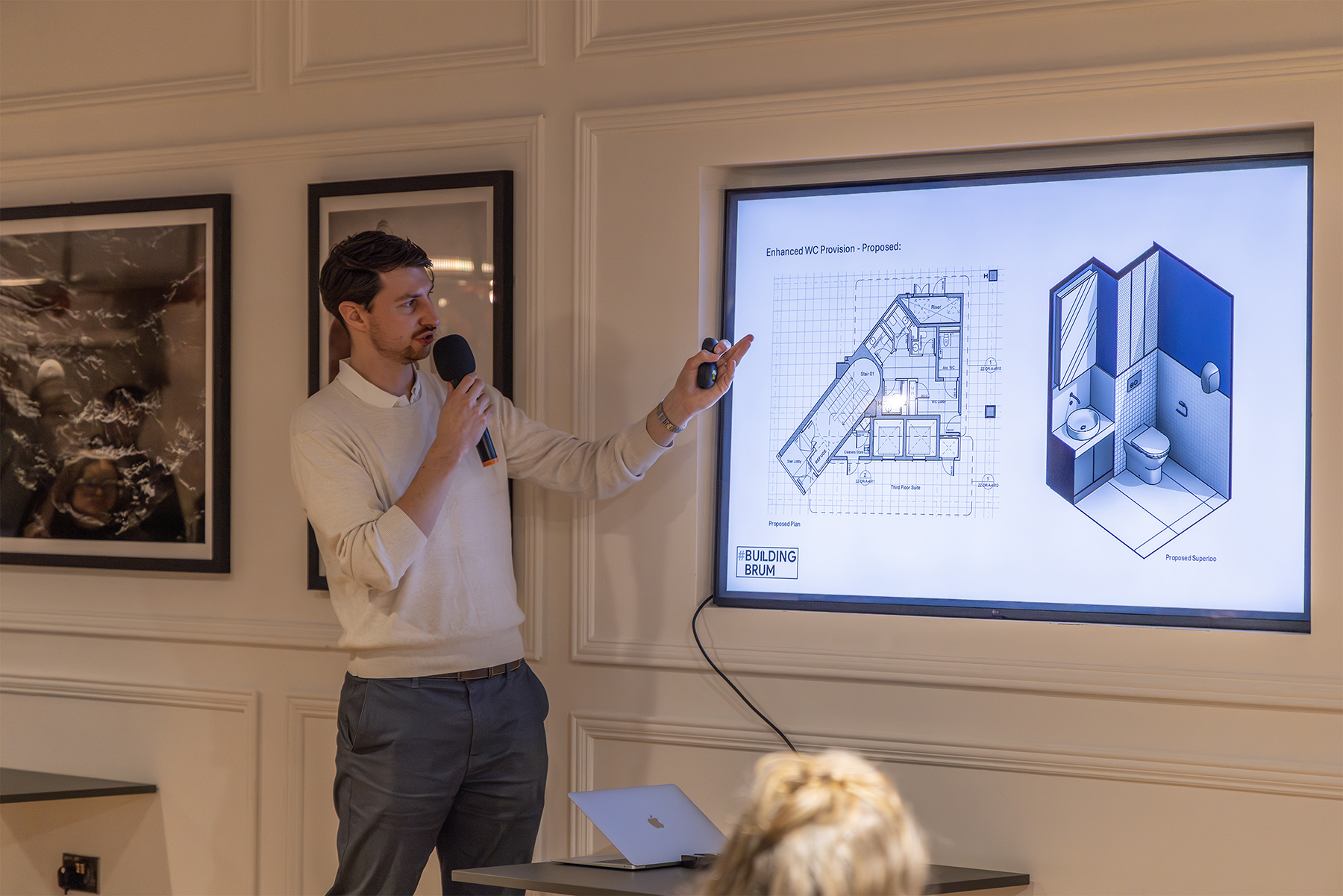The third phase of Birmingham City University’s growing campus, Curzon B, has officially opened to provide a mixture of formal and informal teaching spaces for 3,000 students. The new space is also now home to the university’s Centre of Academic Success, the New Technology Institute (NTI) and its Students’ Union.
Thanks to its position, the building offers excellent canal-side views and extensive external landscaping has provided space for the building’s inhabitants to relax and engage with each other.
We have worked with BCU to establish a strong visual vocabulary for the campus. Curzon B will develop the terracotta element introduced in the previous Curzon Building. Rich red fins denote key social learning spaces, as well as providing excellent solar shading. Our design utilises a combination of brickwork and glazing to create a crisp contemporary style, which echoes the industrial heritage of the surrounding area.
Curzon B is split into two sections with a two and six storey element. On the six-storey block, bronze window reveals create a strong visual marker for the building when viewed from the canal corridor. An expansion to the Student Union will be created through this project, as well as a research centre and support areas.
The structure extends the AA-designed award-winning £63 million Curzon building, which has been housed on Cardigan Street in Birmingham’s Eastside since 2015. We are thrilled to continue to work with the university on its transformation of this part of the city.
Professor Philip Plowden, Vice-Chancellor, Birmingham City University, said:
“From individual study pods to meeting rooms, we hope that students will really benefit from these facilities that will help them achieve success in their studies. We are committed to providing the best possible learning experience for all our students and this extension will play a key part for that aim.
With work now commencing on HS2, we are delighted to be further contributing to the renaissance of Birmingham’s Eastside area with the latest expansion of our City Centre Campus – already a major landmark for hundreds of thousands of people arriving at Birmingham New Street by train every day.”





